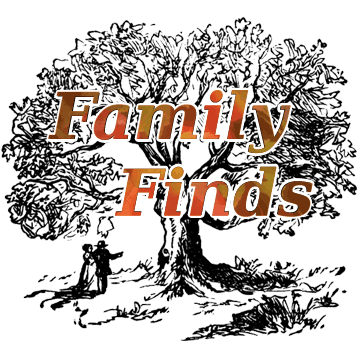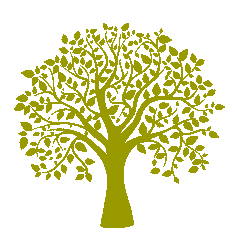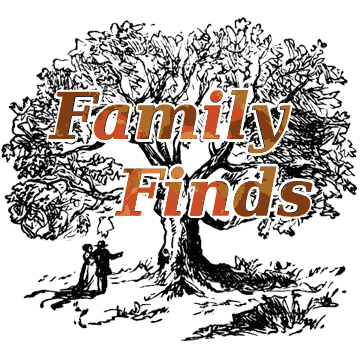
Free Resources
One of my favorite free online resources is FamilySearch. [1] The site has a huge collection of indexed, digital records. Birth, death, marriage, and more, and they are free! Their records are from countries all over the world and they are regularly adding to the archive. FamilySearch is provided by The Church of Jesus Christ of Latter-day Saints, family research is one of their main missions. In addition to the records collections, you can optionally build a family tree and attach records to your ancestors. There are too many features to list here, but check it out. Did I mention it’s free?
 Online Books
Online Books
I previously wrote about accessing old books online in 2019’s week 5 prompt, At the Library. [2] Many genealogy related books can be found online, digitized and free. I particularly use Google Books [3] and the Internet Archive [4] regularly while researching my ancestors. Although, be aware that not all Google Books are free. Most state universities have online, digital collections that are free to access. These university sites often include other digital materials, like photos, maps, and local publications. For example, I often turn to the IUPUI digital collection to view the Sanborn Fire Maps for Indianapolis. [5] A good place to begin your search for free digitized books is at the Digital Public Library of America. [6] The DPLA aggregates digital materials from institutions across the country. The genealogical materials [7] I have accessed through the DPLA site are free, and in the public domain, but some items on the DPLA are fee based.
Maps
Genealogists use maps to recreate or re-imagine the places their ancestors lived. I have a few favorite, free, map sites I regularly access. Many maps, including Sanborn Fire Maps, can be found online at the Library of Congress. [8, 9] The David Rumsey Map Collection is another free, online source of old maps from all over the world and many different eras. [10] The Bureau of Land Management has an online, and free, database of land records. [11] One way I have used the BLM site is drilling down on their interactive map to locate a particular township, range and section. [12] This has enabled me to locate my ancestor’s homesteads and land grants. Lastly, don’t overlook using the free Google Maps interactive mapping site. [13] Not only can you view and create maps and routes, you can use the Google Street View feature to see what a particular location looks like today.
Online Groups
Genealogists are generous, do not overlook fellow researchers as free resources. An online site I have received free help from is called Random Acts of Genealogical Kindness. [14] Individuals volunteer to do real-world look ups at their local libraries, historical societies, government agencies and more. I benefited from this site when I was seeking a marriage record in another state. I contacted a volunteer whose profile indicated they would do look ups and make copies at the historical society. Within a few days I received an image of the document I was seeking.

Facebook Groups
Another method for getting in touch with other genealogists who may be able to help with research is through Facebook. Believe it or not, Facebook Groups are a great free resource for genealogists. If you need help looking up a record, either online or off, look for a Facebook group that is relevant to your search. There are genealogy and historical focused Facebook Groups covering many topics and locations. If you already have a Facebook account, which are free, find a group and ask to join. Once you are admitted to the group you can post your query. The larger the group the more likely you will get a fast response. I have only had positive outcomes with these groups, whether posting a query or offering an answer to someone else. And, this help is freely offered by kind people who enjoy helping others.
Conclusion
Many of the free resources I have highlighted here are online and require internet access which typically is a paid service. But, most libraries offer free internet access to their patrons. Some libraries even offer free access to sites that charge membership fees to individuals, like My Heritage and Ancestry.
Although a paid membership with a genealogy website or society is great to have, there is no shortage of free genealogy research materials to be found online, and offline. You just need to look or ask.
SOURCES:
- Website, FamilySearch; https://www.familysearch.org/en/
- Blog post, Family Finds: Digital Bookshelf; https://barblafara.com/digital-bookshelf/
- Website, Google Books; https://books.google.com/
- Website, Internet Archive; https://archive.org/
- Website, IUPUI: University Library; https://cds.ulib.iupui.edu/collections/sanbornjp2
- Website, Digital Public Library of America; https://dp.la/
- ibid: Family Research Guide to DPLA; https://dp.la/guides/the-family-research-guide-to-dpla
- Website, Library of Congress: Digital Collection; https://www.loc.gov/collections/
- ibid: Maps Collections; https://www.loc.gov/collections/?q=maps+division
- Website, David Rumsey Map Collection; https://www.davidrumsey.com/home
- Website, Bureau Of Land Managment: General Land Office Records; https://glorecords.blm.gov/search/default.aspx
- Interactive Map, BLM Land Catalog; https://glorecords.blm.gov/LandCatalog/Catalog
- Website, Google Maps; https://www.google.com/maps/
- Website, Random Acts of Genealogical Kindness; https://raogk.org/
1 Comment
Submit a Comment




This is a very informative post and reminds me that I need to use Family Search more in my research. For some reason I have not had much success with it though others I know have. I will have to try again and see what I can learn.